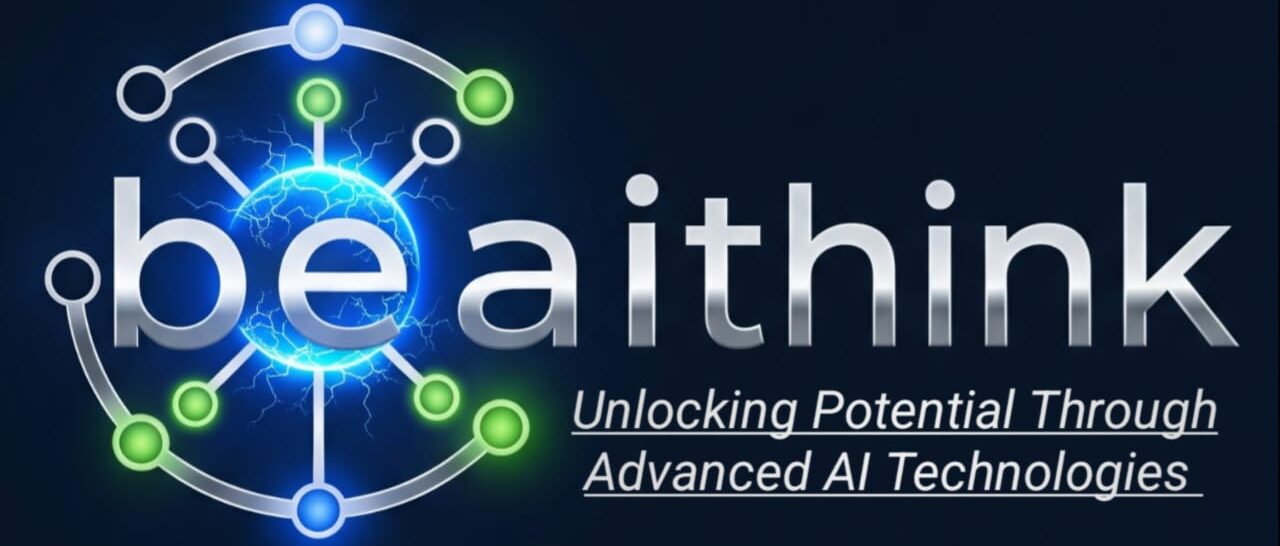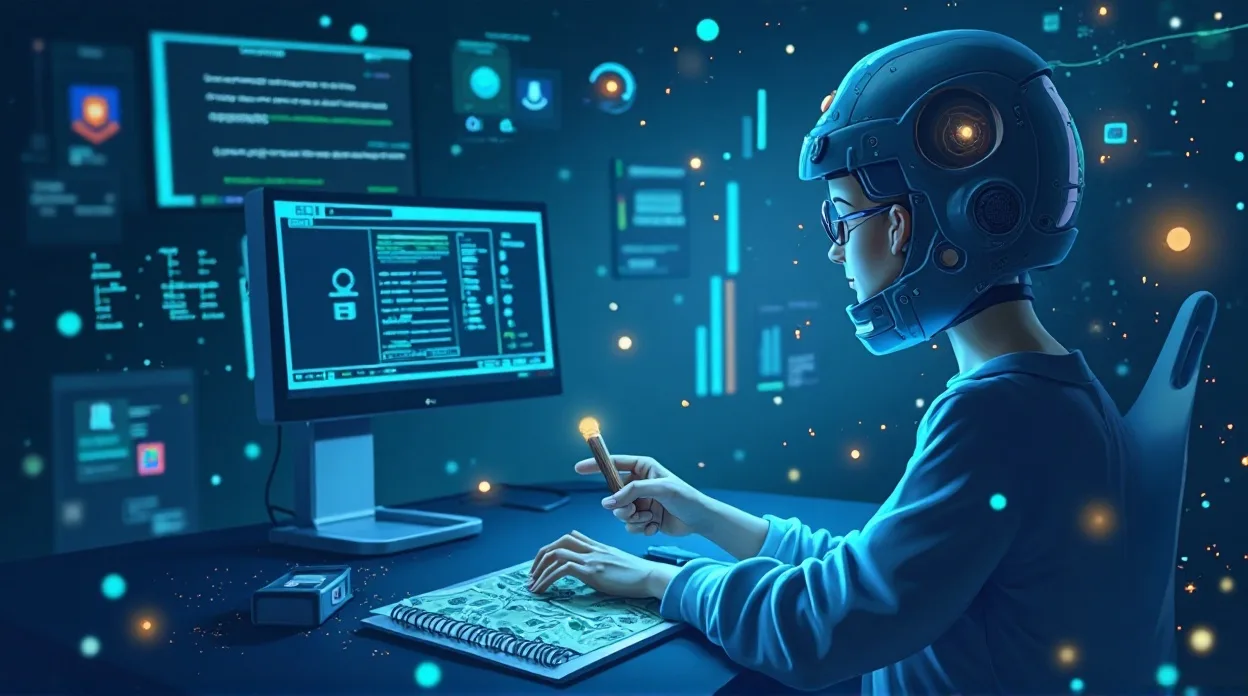Think AI is only for coders and tech wizards? Think again! In today’s world, powerful artificial intelligence tools are more accessible than ever, allowing anyone to harness their capabilities without writing a single line of code. Whether you want to generate stunning images, write compelling text, analyze data, or even create music, AI can help you do it with remarkable ease.
This guide will show you how to get started with AI in 4 super easy steps, proving that you don’t need to be a programmer to be an AI innovator.
Step 1: Pick Your Perfect AI Tool
The first step is choosing the right AI tool for your needs. The good news? There’s a vast and growing universe of user-friendly AI platforms designed for specific tasks. Here are some popular categories and examples of no-code AI tools:
-
For Text Generation (Writing, Brainstorming, Summarizing):
-
ChatGPT: The most famous conversational AI. Great for drafting emails, generating ideas, writing stories, summarizing articles, and answering questions.
-
Google Gemini: Similar to ChatGPT, offering strong text generation and summarization, often with more up-to-date information.
-
Jasper AI: Popular among marketers and content creators for generating blog posts, ad copy, and social media content.
-
-
For Image Generation (Creating Art, Photos, Graphics):
-
Midjourney: Known for its artistic and highly creative image generation.
-
DALL-E 3 (integrated into ChatGPT Plus): Excellent for generating a wide variety of images, from realistic photos to abstract art.
-
Canva’s Magic Studio: Integrates AI image generation directly into a user-friendly graphic design platform, perfect for marketing materials and presentations.
-
-
For Audio & Music Generation:
-
Suno AI: Creates full songs with lyrics and vocals from simple text prompts.
-
AIVA: Generates instrumental music in various styles.
-
-
For Simple Video Creation:
-
HeyGen: Turns text into AI-generated videos with realistic avatars.
-
InVideo AI: Helps you create videos from text or existing media with AI assistance.
-
How to Choose: Think about what you want to create or achieve. Do you need help writing? Are you looking to make unique images? Start with a free trial or a basic version of a popular tool in that category to get a feel for it. Most of these tools have intuitive web interfaces that are easy to navigate.
Step 2: Understand the Art of the “Prompt”
Once you’ve chosen your tool, the next crucial step is learning how to “talk” to the AI. This is done through prompts – simple text instructions that tell the AI what you want it to do. Think of it as giving directions to a very smart, but literal, assistant.
-
Be Clear and Specific: Instead of “write something,” try “Write a 200-word blog post about the benefits of remote work for small businesses, using an enthusiastic and encouraging tone.”
-
Provide Context: If you’re generating an image, don’t just say “cat.” Say “A majestic orange tabby cat sitting on a windowsill, looking out at a rainy city street, painted in a watercolor style.”
-
Specify Format/Style: Do you want a bulleted list, a poem, a professional email, or a hyper-realistic photo? Include that in your prompt.
-
Experiment: Don’t be afraid to try different phrasings and details. AI often responds best to iterative refinement. If the first result isn’t perfect, tweak your prompt and try again.
Examples of Good Prompts:
-
Text: “Write a short, engaging social media caption for a new coffee shop opening, highlighting their artisanal lattes and cozy atmosphere. Include relevant emojis.”
-
Image: “Generate a futuristic cityscape at sunset, with flying cars and towering skyscrapers, in the style of cyberpunk art.”
-
Music: “Create a chill lo-fi hip-hop beat, about 1 minute long, suitable for studying.”
Step 3: Iterate and Refine
Your first AI output might not be exactly what you envisioned, and that’s perfectly normal! The real magic of using AI effectively without code lies in iteration and refinement.
-
Review the Output: Look at what the AI generated. What do you like? What needs improvement?
-
Give Feedback: Most AI tools allow you to continue the conversation or regenerate content based on new instructions.
-
“Make it shorter.”
-
“Add more detail about the characters.”
-
“Change the color palette to blues and greens.”
-
“Generate 3 more variations of this image.”
-
“Make the tone more formal.”
-
-
Ask Follow-Up Questions: If you’re using a conversational AI like ChatGPT, you can ask it to explain its reasoning or explore different angles.
-
Save and Organize: Once you get something you like, make sure to save it! Many platforms allow you to keep a history of your interactions.
Think of this step as a conversation. You tell the AI what you want, it gives you a draft, and then you provide feedback to get closer to your ideal outcome. This back-and-forth process is how you truly master no-code AI.
Step 4: Integrate and Share Your Creations
You’ve created something amazing with AI – now what? The final step is to integrate your AI-generated content into your projects or share it with the world.
-
Download: Most AI tools allow you to download your generated text, images, or audio files in common formats (e.g., .txt, .png, .mp3).
-
Copy/Paste: For text, you can simply copy and paste it into your documents, emails, social media posts, or website.
-
Use in Other Software:
-
Images: Insert them into presentations (PowerPoint, Google Slides), graphic design software (Canva, Adobe Express), or social media platforms.
-
Text: Use it in blog posts, marketing materials, scripts, or reports.
-
Audio/Music: Add to videos, podcasts, or presentations.
-
-
Share Online: Publish your creations on social media, your personal website, or dedicated creative platforms.
Important Considerations:
-
Attribution: While you created it with AI, it’s good practice to mention that AI tools were used, especially for professional or public-facing work.
-
Review and Edit: AI is a powerful assistant, but it’s not perfect. Always review, edit, and fact-check any AI-generated content before using it, especially for important tasks.
-
Ethical Use: Be mindful of ethical considerations, such as avoiding the generation of harmful, biased, or copyrighted material.
You’re now ready to dive into the exciting world of AI without ever touching a line of code! Start experimenting with different tools, refine your prompting skills, and discover how AI can unlock entirely new levels of creativity and productivity for you. The only limit is your imagination.
Ready to try your first AI tool? Which one will you explore first? Try all of them and make money with AI




